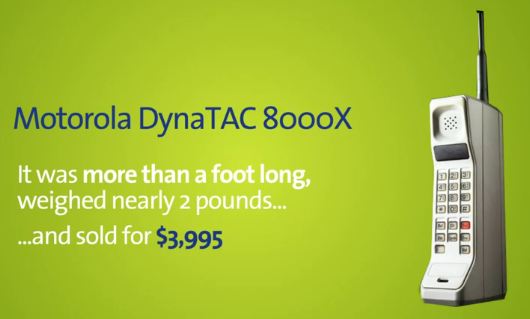Technology

QoTD
History Of Wireless Mobility
Udayakumar Nalinasekaren
Dec 24, 2010
Not so long ago, almost every two way communication device was tethered to a wall socket. This statement will not apply to those roadside payphones. Nevertheless those phones were also anchored firmly in their position and were connected by a cable to the phone network. One always needed to find and reach a device tethered by an electic cable to the network to be able to make a call.
Only people delivering mission critical functions were using technology that did not need a wire for voice communication and hence had the ability to make contact when they needed it and where they needed it. Those functions were mostly limited to defense, emergency healthcare, public transportation, security and safety (e.g., the police radio in a patrol car). Even there, the channel for communication was mostly limited to just one conversation and one way at any given time. The infrastructure required to provide this limited mobile communication facility was very expensive to procure and operate.
Wireless mobility's first breakthrough (and hence the first application of technology) was to untether two way voice communication from the wall socket and bring down price point for such a service to affordable levels. To improve economy of scope, it was necessary to enable multiple simultaneous voice conversations using the same radio infrastructure. Seamlessly connecting the existing wired phone system to the new wireless system was required to make consumption for the wireless system go up gradually. This required the numbering system and the calling methods to be (well almost) similar. Perhaps, the only difference we adjusted to was the lack of a familiar ringtone that we want to hear from the wired handset before we dial a number. In the cellular system, we instead look for a visual cue - the radio signal strength bar on the display.
Thanks to all this innovation, spouses can instantly reach out to their partners when in need, conference calls happen and decisions get taken even during a long commute to the airport for a busy executive, we can summon our limousine in the parking lot just as we are finishing up a meeting and are about to leave, and so on. We have experienced countless advantages. That is why the wireless mobile phone has become so ubiquitous. Voice as a mobile application had immense potential to unleash productivity. The proof is in India's teledensity which has already reached one phone for every two people. This used to be one in hundred just about 15 years ago. Mass adoption has also resulted in down to earth pricepoints for procurement of equiment and usage fees.
Welcome to the wonderful world of cellular phones (we will see how cellular is different from wireless later). While the first fully automatic mobile telephone was invented in 1953 by Ericcsson, the first handphone that did not need a suitcase to carry it was available only in 1973.
Even this phone, by all standards, was bulky, heavy and was a very expensive buy. Today you can buy a basic mobile phone in India for about $25-$50. The phone with such basic functionality was costing nearly $4000 when it was first released to the market. Countries like India saw the mobile phone only during the mid to late 1990's. The per minute call charges at that time were in excess of $1 in India. Only the rich and the famous folks of India could think of owning a cellphone. However, even that population was comparable in size to a market in any other developed country. That is probably on reason India got its cellphones in the first place. The other is the government's decision to let go of control where it was inappropriate.
Untethering voice from the wall socket definitely came with a premium tag wherever such fucntionality was launched. The designers were probably a little worried about the operating cost of the voice call on the mobile wireless (cellular) network. They actually threw in a short message service. If you just needed to convey a short message to another person, both parties need not spend for the airtime of a voice call where precious $ would be spent on courtesy and greeting protocols. Messages were limited to a couple of hundered letters at a time. It is this basic structured communication facility that eventually unleashed much creativity in developing mobility applications and increased the usefulness of the cellular phone as a mobility enhancer.
Today's mobile phones (also called smart phones) have the capability of delivering e-mail, high resolution pictures/video, high quality audio, and websites to you wherever you are in a mobile network. Added to this, most phones have satellite assisted global positioning systems integrated in them. These high end capabilities have therefore placed high bandwidth internet connectivity, location awareness and unlimited number of possibilities for wireless mobility applications that can unleash productivity for many kinds of users. We will see.
My Artwork
Coming soon...Latest Blog Posts
Coming Soon
Archives
Search




